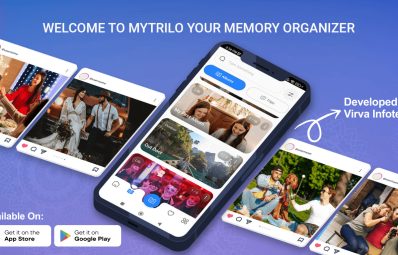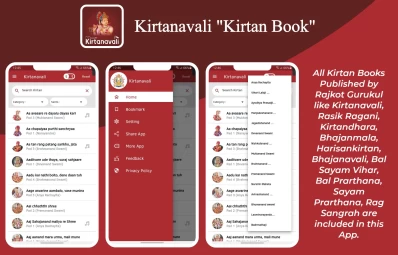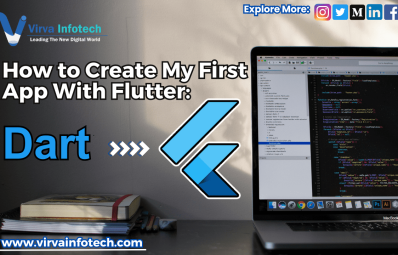Virva Infotech offered test coverage to all critical areas of the platform. Their availability and a keen eye for detail made them an ideal service provider. I was impressed that Virva Infotech offered test coverage to all critical areas of the platform. Their availability and a keen eye for detail made them an ideal service provider. I was impressed
We Are Offering All Kinds of IT Solutions Services
We're More Than Just a Software Company-We're Your Strategic Partner We offer a full suite of services to help you achieve your goals
Unleash Your Potential with Flutter Excellence
Flutter is your gateway to success. At Virva Infotech, our IT services leverage the power of Flutter, offering expert solutions for businesses. With our expertise, you can optimize and scale, achieving excellence in digital transformation. Flutter's agility, Virva Infotech's guidance, and your potential combine for remarkable results. Our commitment to innovation and growth ensures a competitive edge. Join us for a journey towards excellence today.

Ignite Success with Leading Android Services
At Virva Infotech. Our expert team offers top-tier Android solutions to drive your business forward. With innovation and reliability, our services ensure your apps stand out in the market. Choose us to optimize and enhance your Android applications, gaining a competitive edge. Trust our experience to stay ahead in the ever-evolving world of Android technology. Ignite your journey to success today with Virva Infotech's leading Android services.

Chart a Bright Future with Kotlin
Kotlin is your pathway to success. At Virva Infotech, our Kotlin development experts pave the way for your digital success. Harness Kotlin's efficiency and reliability for standout applications. We optimize your projects for innovation and performance. Trust Virva Infotech for a dynamic future, ensuring a competitive edge. Chart your path to success with our Kotlin development services and elevate your digital ambitions.

Soar to Success with React Native - Act Now!
Our React Native experts are your launchpad to digital triumph. React Native's versatility and efficiency empower exceptional app development. We optimize projects for performance and innovation. Trust Virva Infotech for immediate, impactful success. Soar to new heights with our React Native solutions and make your digital dreams a reality today.

Begin Your Journey: Opt for React.JS Today
Here is your foundation for a successful digital journey. React.JS, known for its flexibility and performance, empowers outstanding web development. We optimize projects for innovation and efficiency. Trust Virva Infotech for a seamless start to your journey. Embark on your path to success with our React.JS solutions and take the first step toward turning your digital aspirations into reality today.

Elevate Your Dreams with Cutting-Edge Xamarin Solutions
At Virva Infotech. Our Xamarin experts are your catalyst for realizing digital dreams. Xamarin's cutting-edge technology and versatility enable top-tier app development. We optimize projects for innovation and performance. Trust Virva Infotech for a seamless ascent to your digital aspirations. Elevate your success with our Xamarin solutions and transform your digital dreams into reality today.

Today's Advantage: Experience IOS Excellence
iOS, known for user-friendly design and high performance, paves the way for outstanding app development. We focus on innovation and efficiency to elevate your projects. Virva Infotech is your trusted partner for a smooth path to digital excellence. Discover the success-enhancing capabilities of our iOS solutions and bring your digital ambitions to life today

Step into Prosperity with .NET as Your Guide
.NET, known for its adaptability and robustness, fuels exceptional application development. Our focus on innovation and efficiency ensures project optimization. Place your trust in Virva Infotech for a seamless journey towards prosperity. Embark on the path to success with our .NET solutions, bringing your business aspirations to life today.

Experience your digital growth with Angular
Virva Infotech is your gateway to digital advancement with Angular. Angular, celebrated for its dynamic capabilities, drives exceptional web development. Our unwavering commitment to innovation and efficiency ensures project success. Rely on Virva Infotech for a smooth path towards digital growth. Explore the route to success with our cutting-edge Angular solutions, transforming your digital aspirations into reality today.

Kick-Start Your Digital Business with the Power of Laravel
Laravel, known for its efficiency and flexibility, fuels outstanding web development. Our commitment to innovation and optimization ensures project success. Trust Virva Infotech for a seamless journey towards digital business success. Embark on the path to success with our cutting-edge Laravel solutions, turning your digital business ambitions into reality today.

Rev Up Your Project with Dynamic PHP Solutions
At Virva Infotech. Our PHP proficiency propels project acceleration. PHP's dynamic and versatile nature is the driving force behind exceptional web development. We prioritize innovation and optimization to elevate project success. Trust Virva Infotech for a smooth journey towards project excellence. Embark on the path to success with our leading-edge PHP solutions, transforming your project ambitions into reality today.

Experience Excellence through WordPress Development
Our WordPress proficiency ensures exceptional outcomes for your online endeavors. WordPress, recognized for its user-friendly interface and versatility, empowers outstanding web solutions. We prioritize innovation and optimization to guarantee excellence in your digital projects. Trust Virva Infotech for a smooth journey towards digital success. Explore the path to excellence with our advanced WordPress solutions, bringing your digital ambitions to life today.

Boost Your Digital Presence Today with Node JS
Our Node.js proficiency ensures significant enhancements in your digital visibility. Node.js, celebrated for its rapid performance and scalability, fuels exceptional web solutions. We prioritize innovation and optimization to strengthen your digital presence. Trust Virva Infotech for a seamless journey towards digital success. Experience the path to an empowered online presence with our advanced Node.js solutions, transforming your digital aspirations into reality today.


How Virva Infotech's 4-Step Process Delivers Exceptional Software Solutions
Discovery
Understanding the client's needs and goals, then defining the project scope, deliverables, risks, and success criteria.
Planning
Creating a detailed timeline, outlining tasks, defining roles and responsibilities, and setting milestones.
Execute
Completing tasks on time and within budget, communicating with the client, and getting feedback on deliverables.
Deliver
Delivering the final product to the client, providing comprehensive documentation, and offering ongoing support and maintenance.
Our Work
Our world-class groundbreaking projects
Our Amazing Happy Clients
Our Global Clients - A testament to our worldwide digital brand
Latest news
Explore Our Blog and Event Updates
Frequently Asked Questions
Feeling curious? Have a read through some of our FAQs or contact us right now to arrange a quick meeting in your convenient time.
Virva Infotech: Your one stop solution for Your IT business!
At Virva Infotech, we offer the best suite of IT services and digital marketing solutions to help businesses of all sizes improve their online presence. We understand that every business is unique, so we tailor our solutions to meet your specific needs and goals. We are committed to providing our clients with the best possible service and support. We work closely with each client to understand their needs and goals, and we develop customized solutions to help them achieve their desired results. If you are looking for a trusted partner to help you improve your online presence, contact us today and strat up your project now.
To acquire a tailored mobile app from Virva Infotech, start by reaching out to us through our website or any of our nine social platforms. We'll schedule a quick online/offline meeting to discuss your requirements and reach an agreement. Subsequently, you'll receive a comprehensive project proposal, and once approved, the implementation phase begins.
Virva Infotech boasts a highly professional digital marketing team. They will manage the entire marketing and branding process from inception. You can rely on our team to build awareness and successfully market your product.
At Virva Infotech, we utilize the latest wide range of standard and contemporary technologies. Our goal is to create user-friendly interfaces that enable smooth interactions between our clients and their products.
Virva Infotech caters to projects of all sizes, including small, medium, and large. Our services are designed to accommodate the needs of small businesses as well as large corporations. Whether your project is big or small, we've got you covered.
Our comprehensive Digital Marketing team will not only provide a free consultation before commencing your project but will also offer ongoing support after the project is completed. We are available 24/7 to ensure your success in scaling up your IT business globally.
The time required to complete a Web/App project at Virva Infotech varies based on the project's size and complexity. Generally, it can take anywhere from a minimum of 5 days to a maximum of 2 months. Some contract-based projects may extend beyond two months.
Our payment structure depends on your specific requirements. In general, we offer two payment options: Fixed Price and Hourly Rate. The choice between these options is determined by the nature of your project and your preferences.
The duration of post-project maintenance depends on the project's complexity. Virva Infotech offers maintenance support for a period ranging from 30 days to 2 months after the product's development. This timeframe can be adjusted based on the specific needs of your project.
































